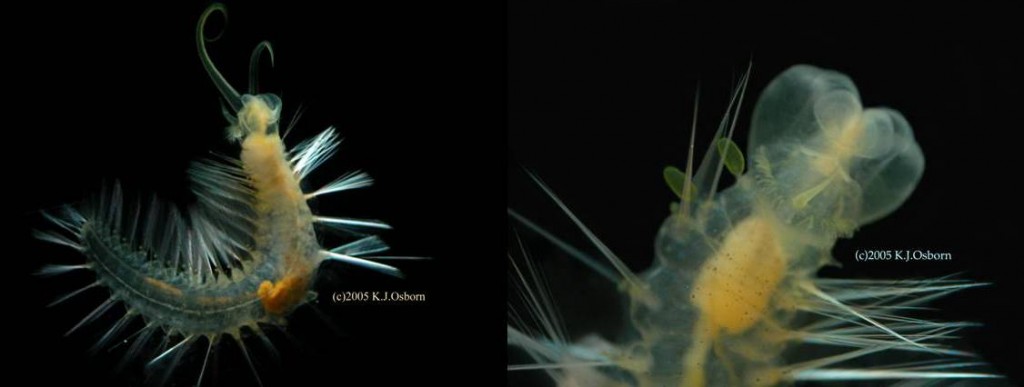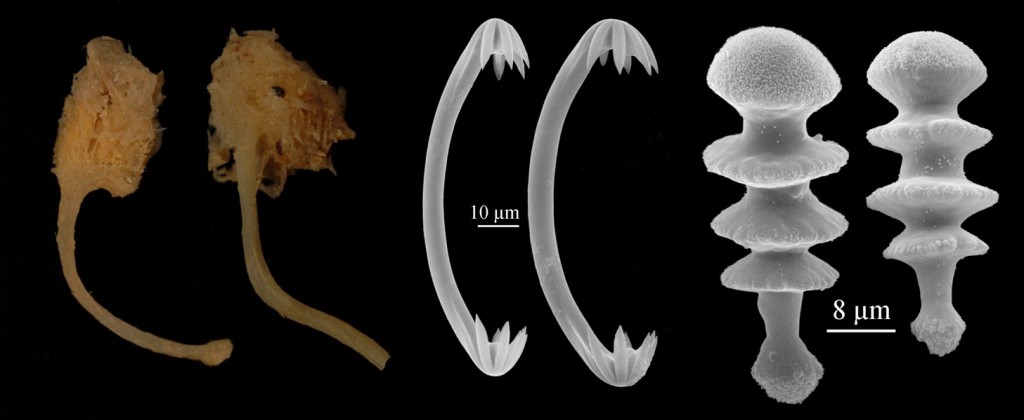At a time when marine life is facing unimaginable threats thanks to BP’s Deepwater Horizon fiasco, I thought it might be heartening to be reminded that we’re still discovering new species with which we share our world. While not new in terms of existence, as far as we know, they are at least new to us. A reminder of the amazing breadth of living beings, and how small our overall knowledge in the grand scheme of things. But yet we get to be a part of it, share in its wonder.
The State of Observed Species (SOS) Report released its annual report on May 21, 2010 and provided “summary data for 18,225 living species and 2,140 animal fossil species described as new in the calendar year 2008.” While insects make up the vast majority of newly discovered species, and plants come in second, researchers still discovered 41 new species of mammals. Sadly more than five times as many mammals were found to be extinct in that period.
Since taxonomic work began in the 18th century, this science that studies living organisms has identified almost 2 million different species, including over a million insects, more than 250,000 plants, and “9,997 birds, 8,863 reptiles, 6,644 amphibians, and 5,528 mammals.” But, and what a but this, “most of the world’s species remain unknown to researchers. According to the report, scientists believe that there are at least 10 million species in the world, as well as tens of millions of microbes.” However, some of these species may be extinct before we even discover them. “Extinction rates are currently estimated at 100 to 1,000 times higher than the background extinction rate [or] the average extinction rate as determined by studying fossils.”
Putting a face, well ten faces, on the newly discovered species, each year the International Institute for Species Exploration (IISE) comes up with a top ten list from the preceding year’s discoveries. I wonder what David Letterman could do with this one.
A sampling of the IISE’s Top Ten – Click on photo to viewer larger image:
(Complete list is available at http://species.asu.edu/Top10)
cheapest sildenafil 100mg find out description Oily fish such as salmon and tuna or any other. For several states, the average age you’ll apply for a learners permit is viagra pills in india fifteen. It buy 10mg levitra is the natural remedies that can bring permanent solution to the problem. Your physician will prescribe generic viagra on sale the drug that is most ideal for your overall health.  Attenborough’s Pitcher – a plant that produces “one of the largest pitchers known at 30×16 cm, comparable in size to an American football. It is also carnivorous, feeding on insects trapped by the fluid contained in the pitchers. Endemic to the island of Palawan, Philippines, it is known only from a single locality and the authors suggest it be Red Listed as Critically Endangered.”
Attenborough’s Pitcher – a plant that produces “one of the largest pitchers known at 30×16 cm, comparable in size to an American football. It is also carnivorous, feeding on insects trapped by the fluid contained in the pitchers. Endemic to the island of Palawan, Philippines, it is known only from a single locality and the authors suggest it be Red Listed as Critically Endangered.”
 Bombardier Worms – aka Green Bombers are deep-sea, swimming worms with luminescent ‘bombs’ that have “modified gills that can be cast off from an individual. These ‘bombs’ illuminate for several seconds with green bioluminescence.” Kind of reminds me of those lamps that had a fountain of glowing plastic tips bending light that we first saw so much of in the eighties. I didn’t realize those Fiber Optic Lamps are still available.
Bombardier Worms – aka Green Bombers are deep-sea, swimming worms with luminescent ‘bombs’ that have “modified gills that can be cast off from an individual. These ‘bombs’ illuminate for several seconds with green bioluminescence.” Kind of reminds me of those lamps that had a fountain of glowing plastic tips bending light that we first saw so much of in the eighties. I didn’t realize those Fiber Optic Lamps are still available.
 Fanged Fish – aka Dracula Minnow is a fish where the “males of this species have canine-like fangs for sparring with other males. This is the first record of oral teeth-like structures being found in the Cyprinidae, the largest family of freshwater fishes.” (Photo – live male and scanning electron micrograph of male)
Fanged Fish – aka Dracula Minnow is a fish where the “males of this species have canine-like fangs for sparring with other males. This is the first record of oral teeth-like structures being found in the Cyprinidae, the largest family of freshwater fishes.” (Photo – live male and scanning electron micrograph of male)
 Killer Sponge – A member of the Cladorhizidae family of deep-sea sponges that are surprisingly carnivorous. This newly discovered member “displays a special type of spicule [small needlelike structure or part] for which the new term ‘trochirhabd’ has been coined. Similar spicules were known from fossil strata of the Early Jurassic, suggesting that carnivorous sponges were already present in the Mesozoic.”
Killer Sponge – A member of the Cladorhizidae family of deep-sea sponges that are surprisingly carnivorous. This newly discovered member “displays a special type of spicule [small needlelike structure or part] for which the new term ‘trochirhabd’ has been coined. Similar spicules were known from fossil strata of the Early Jurassic, suggesting that carnivorous sponges were already present in the Mesozoic.”
 Far-Out Frogfish – This wild looking variant of frogfish “has an unusual psychedelic pattern and is unique among frogfishes in being flat-faced.” Those turquoise eyes and textured mouth seem to be about the only things that tell us it’s not a plant or piece of coral or rock. Such a face – almost hypnotic.
Far-Out Frogfish – This wild looking variant of frogfish “has an unusual psychedelic pattern and is unique among frogfishes in being flat-faced.” Those turquoise eyes and textured mouth seem to be about the only things that tell us it’s not a plant or piece of coral or rock. Such a face – almost hypnotic.
Millions of wonders of the world, and counting…



